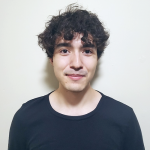Book Review
Spirit Tech: The Brave New World of Consciousness Hacking and Enlightenment Engineering by Kate J. Stockly and Wesley Wildman, is an exploration of the various rising industries that focus on the spiritual growth of individuals. The book covers everything from VR for holy spaces, to tech-induced states of meditation, to therapeutic use of entheogens. The book discusses the rise of technology that can be used to induce states of enlightenment and even telepathy caught my attention.
As an undergraduate student in Neuroscience, I wanted to see if these concepts hold scientific credibility and significance. The book is not only an incredibly comprehensive guide to these new technologies, but everything addressed in this book is far from fiction. The various projects displayed are grounded in genuine innovations in their respective fields. In fact, these innovations are already beginning to enter the market. For example, neurofeedback headbands are available for purchase since 2020.
‘Spirit tech’ is here, and we best be ready for it
For many, the use of modern technology in one’s spiritual journey elicits skepticism. The authors note that humanity has always used technology to support our spiritual experience, whether this comes in the form of items used during prayer and meditation, or specifically designed places of worship.
The use of modern technology in the spiritual world is by no means a break away from human innovation, as technological innovations have integrated with every aspect of human life throughout history. If anything, Spirit Tech acts as a modern recognition of this fact, marking technological advancements as entering the most personal parts of human culture, even that of spiritual and religious thought.
The majority of these technologies seem to allow an individual to participate in profound spiritual experiences that may take practitioners years of devotion to obtain. Reasonably, people are concerned that the experiences that people have when engaging with these technologies are not equivalent to “genuine” practice and revelation.
However, this argument fails to recognize that everyone experiences the spiritual world in a way that is unique to them. Despite this, what matters more is how one reacts to their experience. For many, their revelations, whether achieved with “spirit tech” or not, lead to actual changes in their life. Again, this is an issue that existed far before these new discoveries, and it is a problem that many will continue to grapple with. The use of this tech enables many more people to interact with an aspect of their life that may have seemed once inaccessible.
Spirit Tech acts as a unique opportunity to see the upcoming innovations that will have a profound impact on the religious world, and many institutions should consider the integration of these technologies into their own practices. Many more people could potentially reach profound states of religious practice and thought through this technology. States that, for the majority of human history, required a lifetime of devout practice.
How does one navigate this new spiritual experience? It is exciting to explore how the availability of this technology will push the spiritual world into new, unexplored territory.
Modern technology and meditation
From my childhood, Buddhism has held a very special place in my life because it helps me organize my life and teaches me how to view the rest of the world. My interest in neuroscience and Buddhism made me doubt just how useful any new technology could be used for meditation.
Transcranial Focused Ultrasound (tFUS) operates by utilizing the high frequency of ultrasounds to bypass the skull, allowing for a non-intrusive way to target certain regions of the brain for various procedures. Specifically, to the interest of Spirit Tech, is the ability to use the tFUS to suppress activity in certain regions of the brain.
Jay Sanguinetti at the University of Arizona theorized that by suppressing the basal ganglia with tFUS, one may be able to achieve a deeper state of meditation. This idea sprung out of the discovery of athymhormia, a neuropsychiatric condition, which causes one to experience a lack of motivation or ability to act based on personal desires. For active meditators, this experience is reminiscent of eliminating one’s ego: enabling one to experience the world and oneself without having a desire to act upon it. Sanguinetti’s theorizes that by using tFUS, one may be able to replicate this level of meditation without personally knowing how to reach that state themselves.
In collaboration with Shinzen Young, a meditator with over twenty years of experience, Sanguinetti set up an experiment where Young would meditate while a device would project the ultrasound to his basal ganglia, temporarily suppressing it. The experiment was a success, and Young said that it was the deepest state of meditation he has ever experienced.
Personally, I found this exciting because many people seem to find meditation to be a difficult process. Technology like this would be useful to both meditation beginners and active practitioners, as it may eventually help one learn how to achieve that state of meditation with or without the use of tFUS. This is one example of many spiritual technologies that further fortifies its credibility.
At first, I was skeptical of these technologies, which seemed fantastical and even pseudoscientific. However, the technology presented and the research behind them has been peer-reviewed, the experiments are repeatable, and the science behind how they work is well-researched.
There is no question that this technology is legitimate and important to understand. In these next few years, a comprehensive guide to these new technologies is essential for anyone who wishes to explore their own mind and spirituality in the 21st century, and Spirit Tech acts as a concise introduction.

Luis Luna Martinez
Luis is a Sophomore at Boston University majoring in Neuroscience and Religion. He is interested in pursuing research concerning the neuroscience behind dreams. In his free time, he enjoys drawing, martial arts, and meditation.



